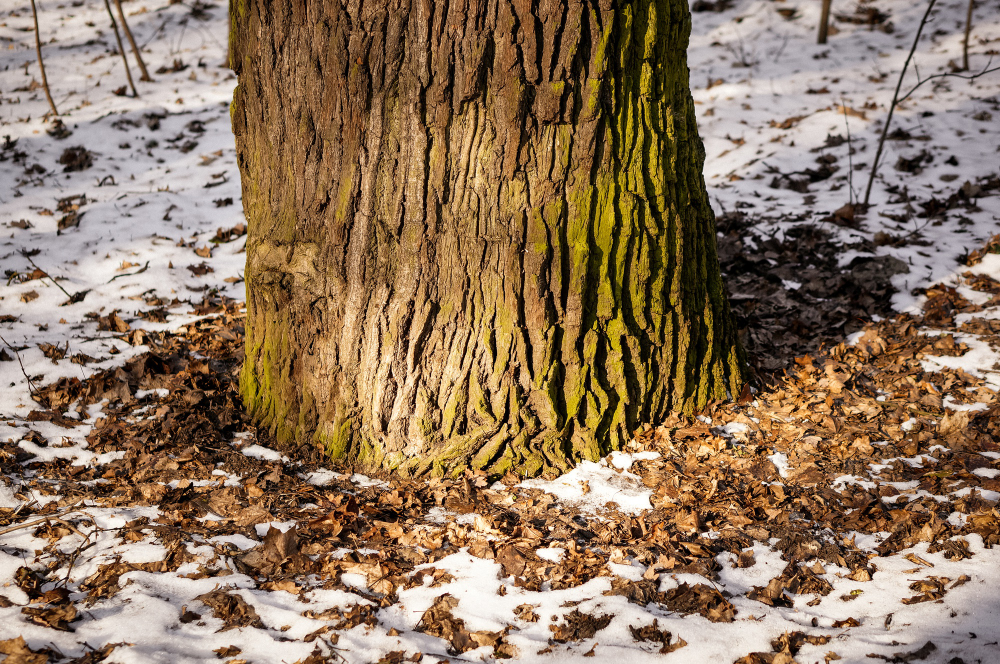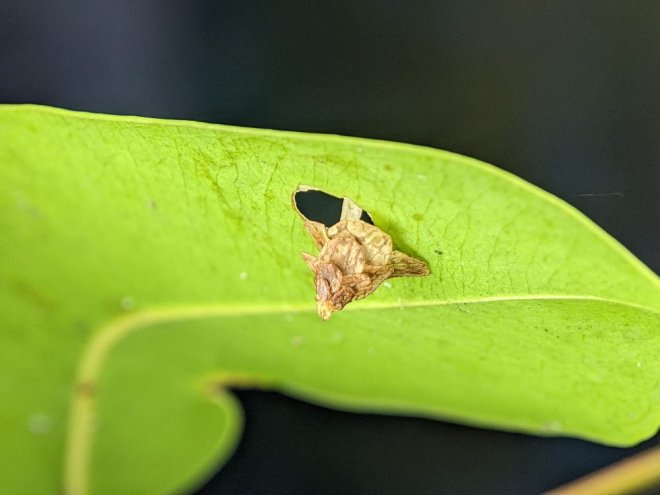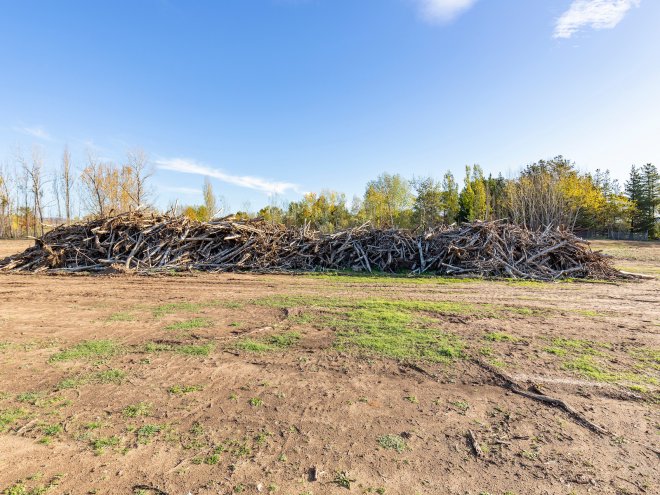Menu
Wintertime isn’t just tough on plumbing and roofing; it is also brutal on trees. Tree roots can freeze when soil temperatures drop below 15°F or the water within the soil surrounding the roots freezes and expands. So, what happens when tree roots freeze? What should you do in the event of root freezing?

In today’s blog post, Driscoll Tree Service explains what can happen if tree roots freeze. We also share tips that will help you protect trees from freezing temperatures. When you’re looking for a dependable tree service, trust the specialists at Driscoll Tree Service to provide reliable services.
Root Damage
A light freeze may not cause much harm to tree roots, but a severe freeze below 15°F is sure to damage the root cells themselves. Frozen water within and around the roots can cause cellular rupture and hinder the roots’ ability to function properly. The trees may exhibit wilting, discoloration of leaves, dieback of branches, delayed bud break, and even root rot. In severe cases, the root damage can be fatal. It’s best to consult with a trusted tree company if you notice any of these symptoms.
Disruption of Water and Nutrient Uptake
Another scenario you can expect when tree roots freeze is a disruption of water and nutrient uptake. Frozen roots are unable to absorb water and essential nutrients from the soil. Even though there may be water present in the soil, in its frozen state it is unusable to the tree. This effect is similar to the tree experiencing a drought. Trees deprived of the resources they need for survival become stressed, weakened, and increasingly vulnerable to disease, pests, and further environmental damage. If the freezing event is severe or prolonged, the tree's vascular system can be permanently damaged.
Increased Vulnerability
The disruption of water and nutrient uptake exposes trees to pest infestations, diseases, and further damage from extreme weather conditions. Pests and diseases often target weakened trees, taking advantage of their compromised defenses. This is why it’s important to take preventive measures to protect tree roots from freezing temperatures. If you need help, consult with a nearby tree company.
Water the Tree Properly
Once the ground thaws, deeply water the tree to rehydrate it. Avoid overwatering, as this can lead to root rot. Focus on slow, consistent watering to allow the roots to absorb moisture effectively.
Mulch Around the Tree
Apply a thick layer of mulch around the base of the tree. This insulates the soil, moderates temperature fluctuations, and retains moisture. Mulch helps protect the roots from further temperature extremes.
Prune Dead or Damaged Growth
Carefully prune any dead or damaged branches to remove stress from the tree and allow it to focus energy on root recovery.
Provide Shelter
If possible, shelter the tree from harsh winds and direct sunlight, especially during the recovery period. Temporary windbreaks or shade cloths can help reduce stress and prevent further damage. This is especially helpful for younger trees or trees that have had extensive root damage.

You’ll know tree roots are affected by the cold weather if you notice delayed leafing, stunted growth, leaf yellowing, wilted branches, and sparse canopy. You should take quick action before the damage worsens and you end up with dead trees. The experts at Driscoll Tree Service are here to help you protect your trees during wintertime and ensure they thrive regardless of the weather. Driscoll Tree Service offers a wide range of services, including tree removal, trimming, pruning, and more. Contact us today for professional and affordable tree services.

Ideal Evergreen Trees to Plant in Your Landscape Evergreen trees are a cherished addition to any landscape, providing year-round beauty and many practical benefits. While deciduous trees may shed their leaves in the fall, evergreens maintain their lush foliage throughout…
Read More
Why are My Tree Branches Falling Off? As the summer temperatures rise, the tranquility of your garden may be disrupted by branches falling off your trees. Unlike the more common storm or ice damage, these occurrences can leave you puzzled,…
Read More
The Hidden Dangers of Bagworms Bagworms are a type of moth larvae that can wreak havoc on trees and shrubs, causing severe damage and premature tree removal projects. Despite their small size and discreet appearance, these pests pose hidden dangers…
Read More
Best Tips to Clear Overgrown Land Land is one of the best investments you can make, but here’s the catch: if you want to unlock its full potential, then you’ve got to cultivate or develop it. Before you can do…
Read More
Should You Remove a Tree Close to Your House? Pros, Cons, and Safe Options Trees are more than just pretty landscape features. They also provide shade that can reduce energy costs, improve air quality, and, in some cases, even “magically”…
Read More
How Storms Impact Your Trees Trees are a valuable addition to any landscape. From enhancing curb appeal to improving the overall quality of life, trees are no denying essential to the ecosystem. However, like most living things, trees are susceptible…
Read More
Why Tree Risk Assessment Is Important Trees are valuable assets that enhance the quality of your landscape and the ecosystem. These magnificent entities provide many benefits, including shade, beauty, and environmental benefits. However, they can experience structural deterioration or health…
Read More
Should I Get Tree Stump Removed or Grinded? No one likes to have tree stumps jutting out of the ground. These are not only eyesores. They are trip hazards and can attract pests and diseases. If you want to get…
Read More
Benefits of Trees Did you know trees cover nearly 40% of the country? Despite trees' many benefits, they are often overlooked and may not receive proper care. At Driscoll Tree Service, we appreciate the role of trees in the ecosystem…
Read More
Georgia Guide to Growing Trees If you are a resident of Georgia, there’s no better time to grow trees than now. With over 100 tree species, it is one of the most diverse ecosystems in the United States. Before planting…
Read More